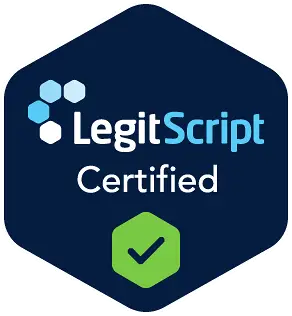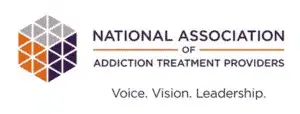Today’s teens are plagued by images of drugs and drug usage. People experimenting with party drugs and even struggling with addictions are depicted in much of the media that teens are exposed to in television shows, movies, and all over the internet. The sad reality is that younger generations often live in a society saturated with drug use. The more kids and teens are exposed to messages and images of substance abuse, drug culture becomes increasingly normalized for the most vulnerable among us. And when using drugs appears to be as commonplace as attending school, addiction can befall those with their whole lives ahead of them.
Which Drugs Do Teens Use?
Teens get ahold of drugs in a variety of places: at school, from friends and even from family members. Nefarious substances can slide around secretly in ordinary-looking containers, or passed from one friend to another on weekends or at parties. Teen drug use can even occur in the most unsuspecting of ways, such as when a well-intentioned family member offers a teen something to help soothe pain or anxiety.
Some people believe that kids and teens will “do whatever drugs they can get their hands on,” but this is not always the case. There are a few drugs, of both the prescription and illicit varieties, that seem to be more widely used among teens than others.
Prescription Drugs
Many teens who misuse prescription drugs get them from someone who takes medication — with or without that person’s consent. In truth, 20 percent of parents report giving their teenager a prescription drug that wasn’t prescribed to them. However, this is not always the case. Drugs to enhance focus, reduce a learning disability, or decrease pain are also commonly prescribed directly to teens. But regardless of how teens procure them, most prescription drugs hold some abuse potential.
This Season, Give Yourself the Gift of a Fresh Start.
Whether you are struggling with addiction, mental health or both, our expert team is here to guide you every step of the way. Don’t wait— reach out today to take the first step toward taking control of your life.
Prescription medications most commonly misused by teens include:
Illicit Drugs
Illegal substances are becoming increasingly accessible to teens, and many of them can be habit-forming at best and addictive and deadly at worst. There are a number of ways teens get ahold of illegal drugs. They may get them from friends or acquaintances, who may have gotten the substances from a street dealer.
Illegal drugs commonly used by teenagers include:
- Marijuana
- Synthetic marijuana (K2, Spice, etc.)
- Cocaine
- Ecstasy (Molly, MDMA, etc.)
- Heroin
- Inhalants
- LSD (acid)
- Mushrooms
Neither prescription or illicit, one of the most commonly abused drugs among teenagers is alcohol. According to the National Institute on Alcohol Abuse and Alcoholism, nearly 60 percent of teens have drunk alcohol by age 18. Worse, this organization reports that adolescents ages 12 through 20 are prone to binge drinking, making up 11 percent of all alcohol consumed in the United States. Underage drinking may seem like a rite of passage, but it can have far-reaching consequences for teens, as with all drug misuse. But with the right intervention tactics and treatment plan, recovery is possible for any young person.
Warning Signs of Teen Drug Use
If a teenager is engaging in drug use, there will likely be certain telltale signs, the most obvious of which are physical evidence of drugs (smoke or chemical smells, remnants of a marijuana flower, a stray pill on the floor, etc.) and paraphernalia. Objects or tools that conceal drugs or enable their use might be stuffed into a backpack, pocket, closet or even hiding in plain sight.
Drug Paraphernalia
Common drug paraphernalia that could indicate teen drug use include:
- Aerosol bottles (usually emptied)
- Aluminum foil
- Lighters
- Needles
- Pipes or bongs
- Pill bottles
- Plastic baggies
- Razor blades
- Rolling papers (can be candy or gum wrappers)
- Small glass vials
- Small spoons
Physical Signs of Drug Abuse
Hard evidence of drug use may never be found. But drug use can often be detected in outward physical signs, as drugs can leave their marks on the body. Teenagers go through many physical changes as they grow, making some physical signs hard to detect, but some changes are unnatural and could be indicative of a drug habit. Physical indicators of teenage drug use include:
- Unintentional weight loss
- Changes in hygiene habits
- Skin problems (scratch marks, rashes, bruises, needle marks, scabs, etc.)
- Bloodshot eyes
- A runny nose
- Nausea and vomiting
- Sweating without physical exertion
- Unusual body odors (i.e. a chemical smell in sweat)
- Slurred speech
- Irregular heart rate
- Tremors or no motor coordination
- Changes in sleeping patterns
Behavioral Signs of Drug Abuse
Drugs don’t just wreak havoc on teens’ bodies; they can also drastically disrupt their behavior patterns and personalities. The behavioral signs of drug use can often be confused with the normal mood swings and hormonal changes of adolescence. But sudden or drastic personality changes, or a pattern of atypical behavior, can indicate a dangerous drug habit. Some signs to watch for include:
- Increased irritability
- Uncharacteristic lying
- Memory loss or blackouts
- Stealing money
- Self-isolation
- Increased sense of secrecy
- Neglecting responsibilities
- Mental illness (anxiety, depression, etc.)
- Changes in school performance (i.e. failing tests, skipping class, etc.)
- Disrespecting authority figures
- Spending time with new or different friends
Why Do Teens Use Drugs?
Adolescence isn’t easy. For many, it’s the hardest season of life. Growing up can be awkward and painful all on its own, but when mixed with the experiences of school, family issues, friendships and more, teens often look for an escape route. The probability of teen drug use is difficult to predict, but there are some substantial factors that increase its likelihood:
- Adolescent Challenges: Going through puberty, choosing a friend group, forming an identity and going through the school system are all factors that can influence drug use.
- Peer Pressure: The struggle to fit in, be liked or be popular can lead many teens to experiment with dangerous substances.
- Mainstream Media: TV shows, movies and social media are saturated with casual drug use, which may encourage young adults to try out substances they might normally avoid.
- Home Environment: Living with an addicted individual, in a single-parent home, or having abusive parents can all be factors in teen drug use as well.
- Location: Moving around a lot, living in a poor neighborhood or living in poverty can cause intense stress for teens. Some areas of the country are also hotbeds for illicit drug trade, which can be bewildering for teens to grow up in.

How to Help an Addicted Teen
Teen addiction is a growing issue and a problem that cannot go unnoticed or ignored. If you know a teen who is struggling with a substance use disorder, help is available. As the first line of defense, speak with your pediatrician. They will know your teen’s medical history and be able to identify signs of drug use you might have missed. A medical professional can usually give you advice on whether treatment is necessary or not, and how to proceed.
If no measures appear to be working, or your teen’s condition worsens, it may be time to seek professional rehabilitative care. There are facilities and clinics across the country with programs designed to treat the nuances of teen addiction. Addiction doesn’t have to determine a teen’s future. At rehab centers like The Recovery Village, more young people are being empowered to pursue a life of sobriety every day.
To speak with someone for free regarding teen addiction, call The Recovery Village Palmer Lake. You will be connected to a caring addiction specialist who can answer your questions and advise you on local treatment options. Calling is toll-free, commitment-free and completely confidential. Your teen deserves to live free from addiction — and with the right care, a life of sobriety is possible.







